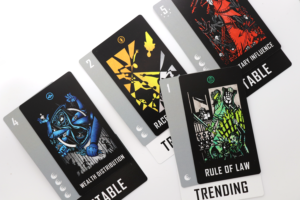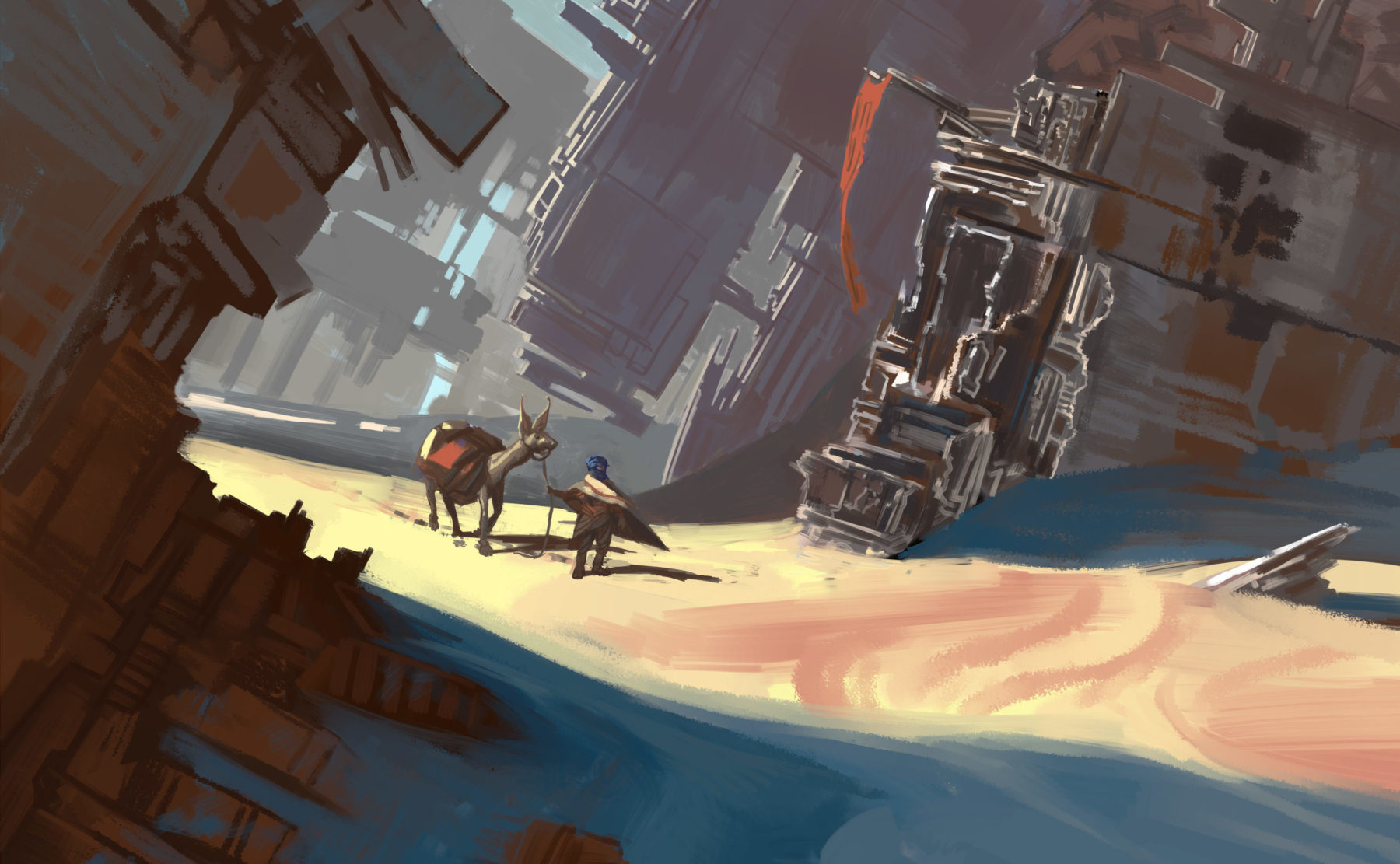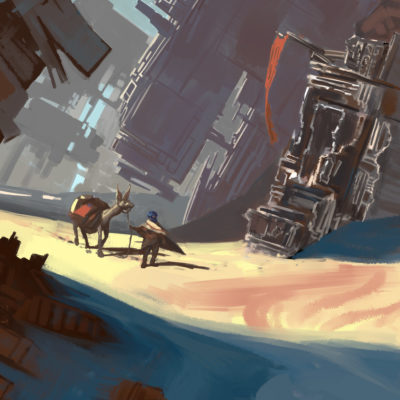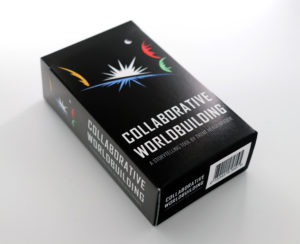Worldbuilding in College Courses
The book Collaborative Worldbuilding for Writers and Gamers came about from years of teaching college-level courses that used tabletop role-playing games as the primary engine for fiction writing. Originally, my premise was that having students embody a player-character would concentrate their thinking on the choices characters make, how those choices drive the plot, and the emotional states of characters throughout a story. While this turns out to be true–I still use RPGs in my fiction writing courses all the time–what really caught my attention the first time I designed a course like this was the different assumptions students were making about the fictional world of the game. We’d touched briefly on the lack of a government and a loosely defined bartering system for the economy, but that was it. I realized we could do much, much more with worldbuilding, which eventually evolved into the methodology described in the book.
 This spring 2019 at the Rochester Institute of Technology, I’m teaching two sections of Worldbuilding Workshop, each with 20 students. We begin the course by reading the first half of my book, talking through things like scope, sequence, perspective, and then moving onto the structures and substructuresof governance, economics, social relations, and cultural influences. Once we’re all clear on terminology, students are randomly assigned into groups of 5. We begin with the genre of the post-apocalypse and read some stories from the collection Wastelands: Stories of the Apocalypse to discuss the different types of worlds and how they present problems for the stories’ protagonists. Then we’ll generate a world using the collaborative worldbuilding card deck, and each of the groups will need to write a metanarrative describing how their world works given the values on the cards. Then they populate a catalog with people, places, and things and write vignette-length fiction set in their world.
This spring 2019 at the Rochester Institute of Technology, I’m teaching two sections of Worldbuilding Workshop, each with 20 students. We begin the course by reading the first half of my book, talking through things like scope, sequence, perspective, and then moving onto the structures and substructuresof governance, economics, social relations, and cultural influences. Once we’re all clear on terminology, students are randomly assigned into groups of 5. We begin with the genre of the post-apocalypse and read some stories from the collection Wastelands: Stories of the Apocalypse to discuss the different types of worlds and how they present problems for the stories’ protagonists. Then we’ll generate a world using the collaborative worldbuilding card deck, and each of the groups will need to write a metanarrative describing how their world works given the values on the cards. Then they populate a catalog with people, places, and things and write vignette-length fiction set in their world.
For their second world, we repeat the process following the same steps, except this time the students get to pick the genre: cyberpunk, urban fantasy, high fantasy, steampunk, or whatever they’re most excited about. We’ll again read some stories to talk about the features of the genre, but this time each group gets to generate unique values for their world. This allows us to talk about differences and similarities of their worlds using the common genre as the connecting point. The final unit allows the students to form their own groups and work on their final collaborative worldbuilding projects. Take a look at the syllabus and schedule to see what we’re up to. I’ll be posting updates as we go along, so you can see what kinds of worlds the students are creating.
In the next post, I’ll talk a bit about my other course, Game-Based Fiction, where we’re building a post-apocalyptic version of Rochester, NY (the Rocpocalypse!) as the play space for a trio of role-playing game sessions, using the narrative-forward RPG Apocalypse World as the engine. Whereas Worldbuilding Workshop builds several worlds over the 15-week semester, this course is all about depth of detail in a single world. Feel free to take a peek at that site too.
 I also want to mention that all the worldbuilding in these courses is being made possible by World Anvil, the best worldbuilding software on the Internet. A basic account is free, with paid memberships offering more advanced features. If you need a way to keep your worlds organized, check out World Anvil!
I also want to mention that all the worldbuilding in these courses is being made possible by World Anvil, the best worldbuilding software on the Internet. A basic account is free, with paid memberships offering more advanced features. If you need a way to keep your worlds organized, check out World Anvil!
Feel free to use the Contact form on collaborativeworldbuilding.com to get in touch with questions, comments, or examples of how you’re using the collaborative worldbuilding methodology.
Until next time, happy worldbuilding!


